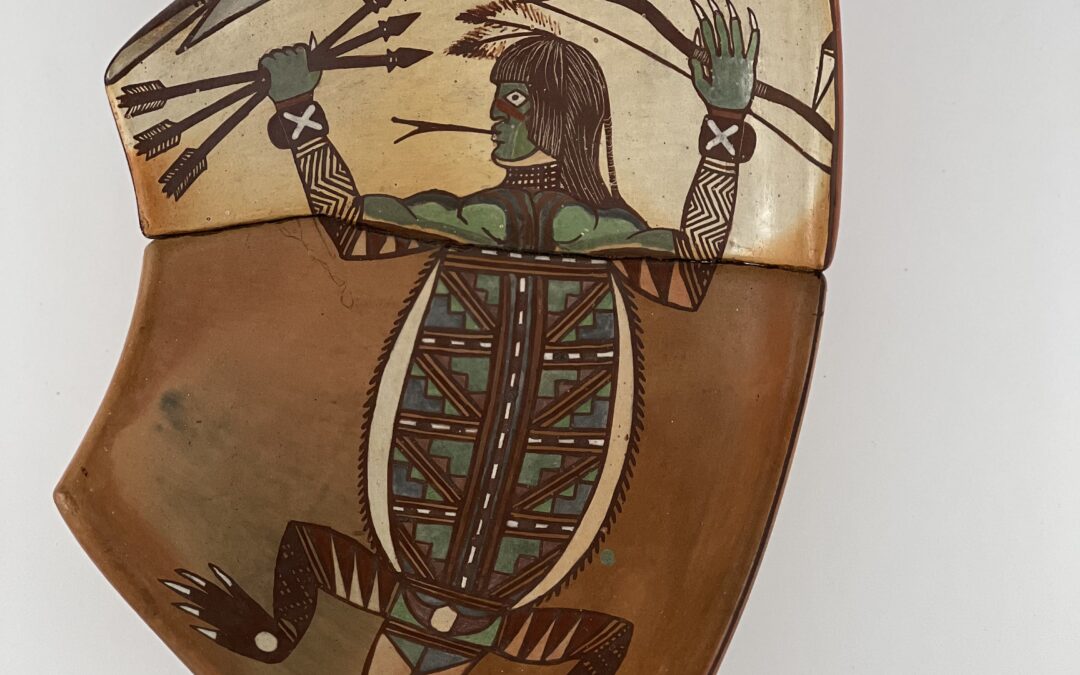
Effigy
The shards are 0.3125” thick. This pot consists of two shards displaying the results of shapeshifting between a lizard and a man. There is something both unsettling and alluring about bodily transformations between humans and animals, Such metamorphosis occurs in the...
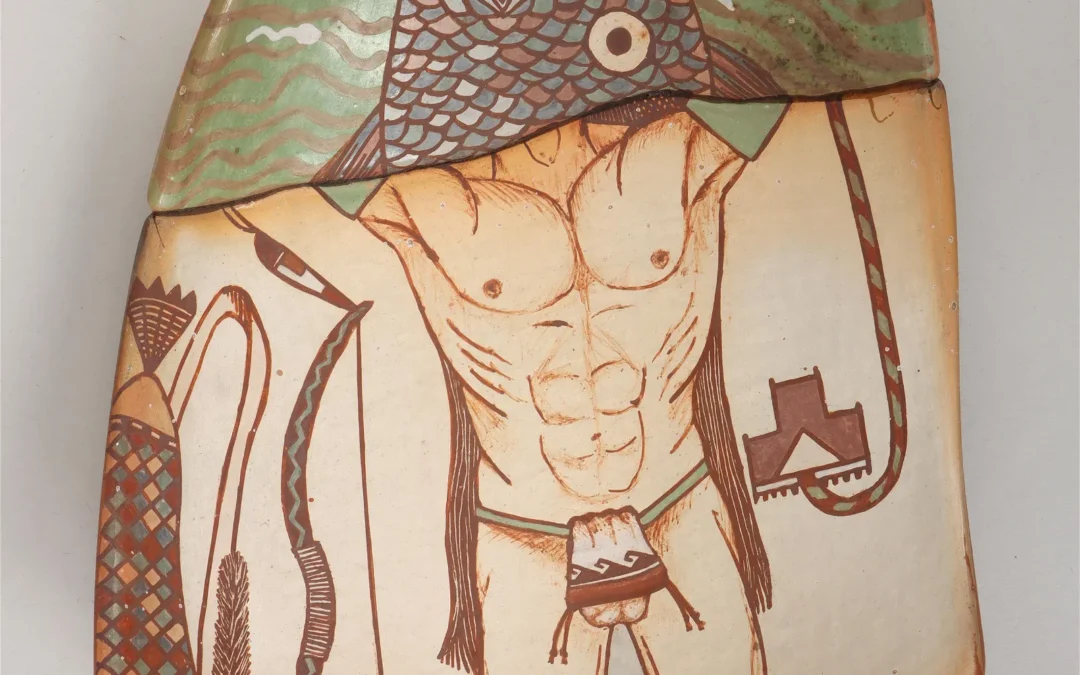
Effigy
The shards are 0.25” thick. This is a two-shard pot displaying an arresting image of shapeshifting between a fish and a man, the direction of metamorphosis being unclear. Pueblo mythology describes shapeshifting, but I do not know if Nathan had specific narratives in...
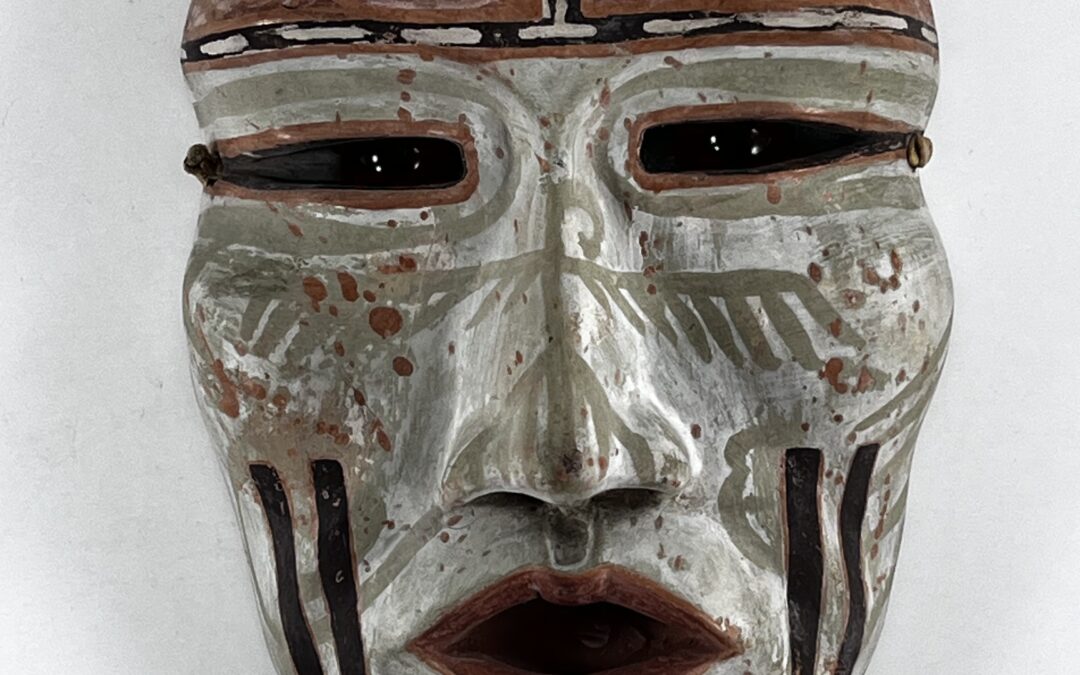
Effigy
This is a face carrying a complex history. I see this man as a mystic wounded warrior, my impressions of him mixed. On the one hand he has a strong visage with a layered iconography. He carries a lot of painful history in those marking. On the other hand, his inset...
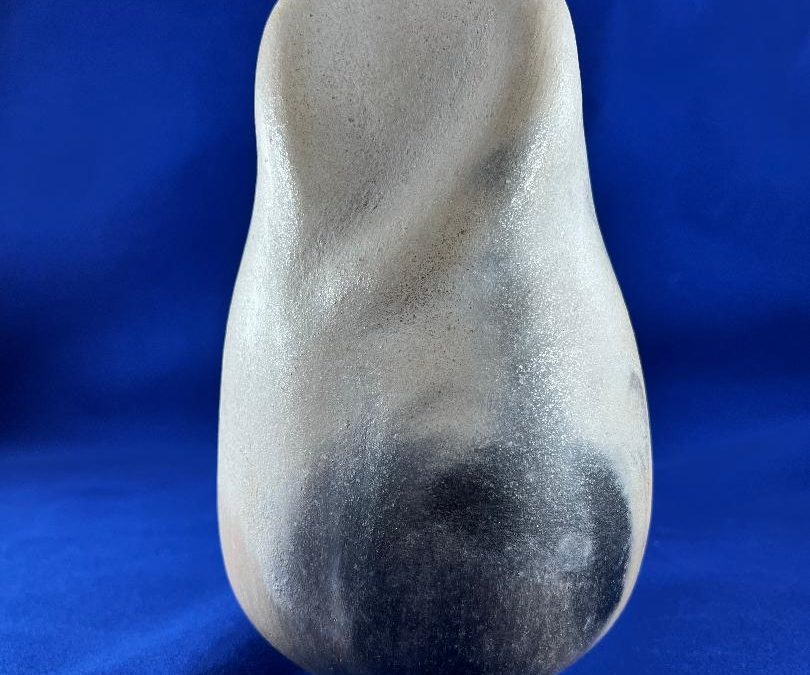
Effigy
o This is the first of three catalog entries about this group of pottery. Each begins with the same introduction. Carrying almost no design, with only subtle suggestions of form, this small grouping of effigies stands in stark contrast to the 11 other beautifully...
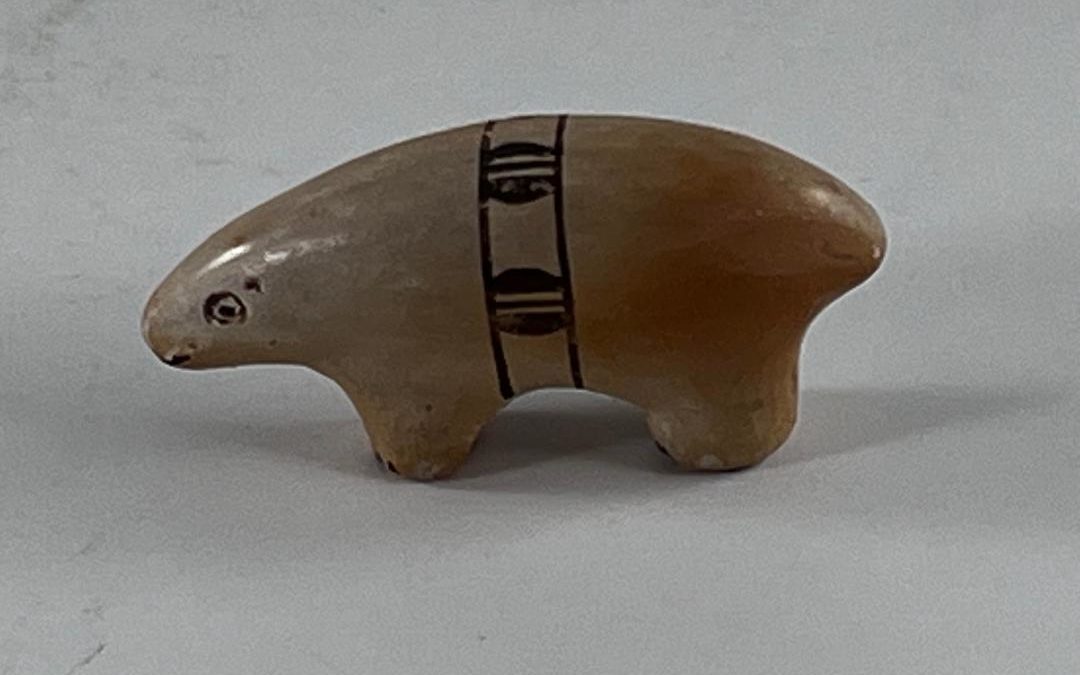
Effigy
This is a small Hopi/Tewa clay effigy, a form not often seen at First Mesa. Its size, shape and subject are more often seen as carved stone fetishs from Zuni. It is included in this collection because its maker, Kenneth Lynch, is the son of Nyla Sahmie. A 1983...
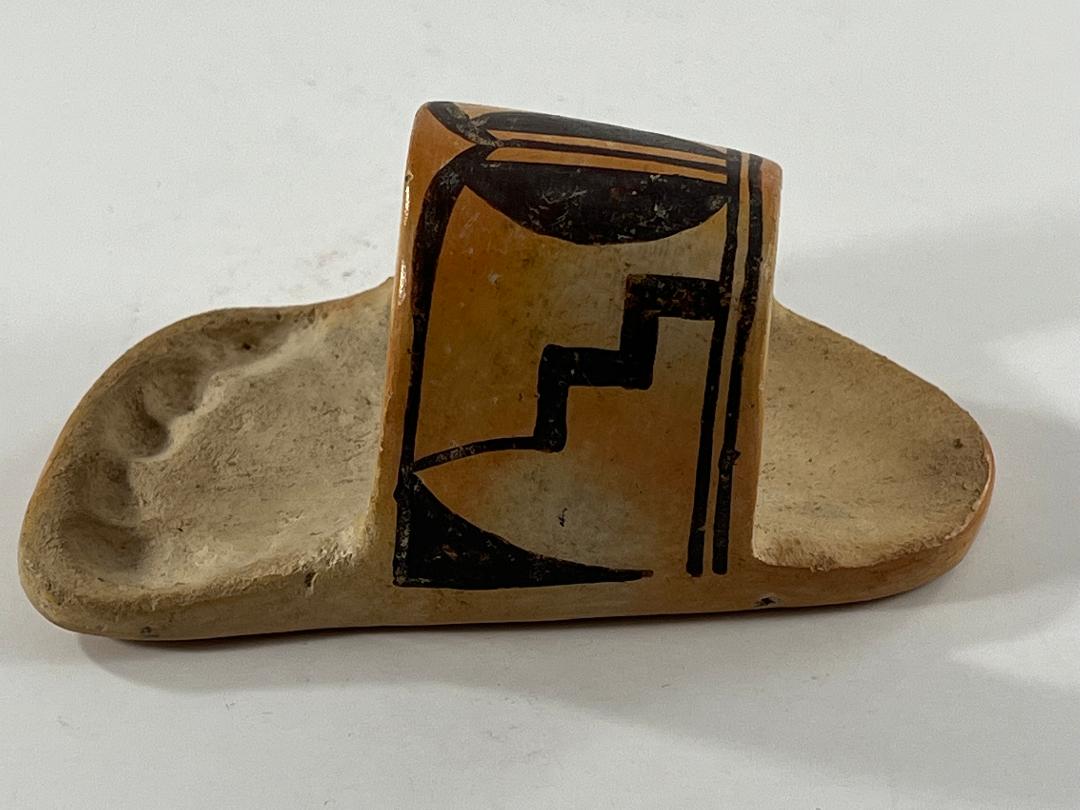
Effigy, Kitsch
This sandal is pure kitsch, and like all great kitsch it makes me smile: especially those little toe prints. Obviously it is tourist art and I don’t know if it was peddled with a purpose. I think of it as a napkin ring. Well-formed and carefully painted, it...








